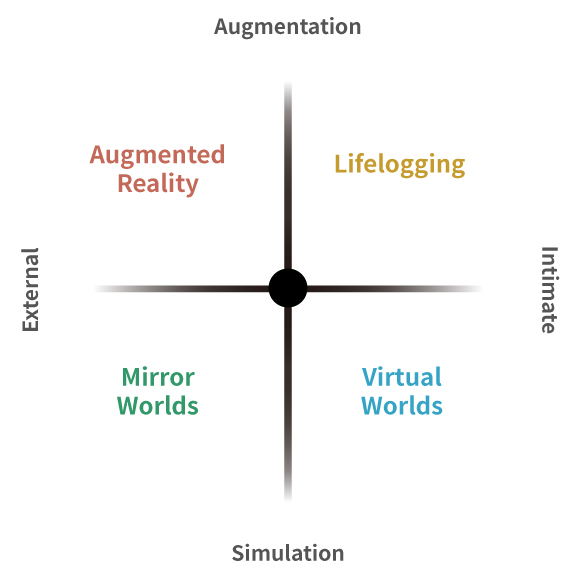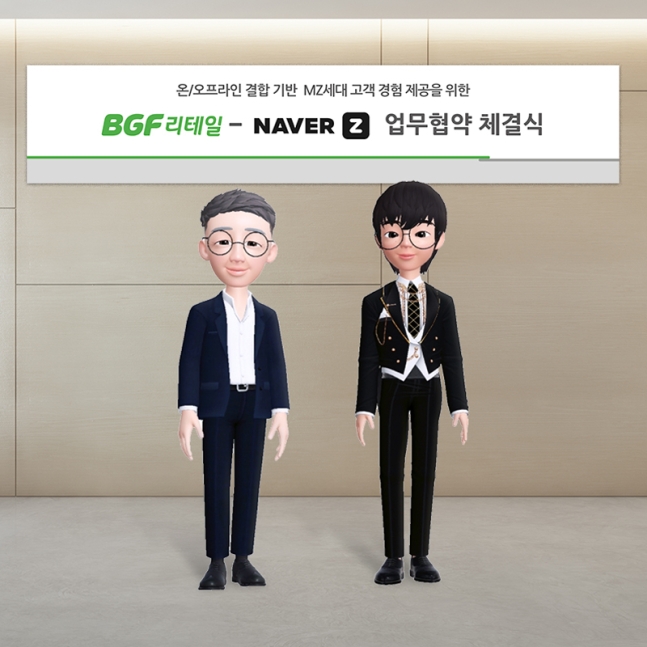
As COVID-19 tears through communities around the world, the pandemic may put a new spin on the concept of ‘public space’. Public spaces have provided citizens with a space to socialize — gather, form groups, come together and have public discourse. A permanent aversion to large public gatherings, however, made people feel the sting of having lost our familiar, and vibrant public places. Even we have difficulties going shopping, going out for dinner, and even when commuting to work and working at the office.
Nevertheless, we have found creative ways to stay connected, using state-of-the-art virtual technologies. Now we can imagine my avatar having a meeting with those of other coworkers in a virtual office that looks exactly like the physical space where you work. It would make us feel like virtually working all the more real in the digital space named ‘metaverse’.
What is metaverse?
The term ‘Metaverse’ means ‘beyond universe’, created by the convergence of an enhanced physical reality with a virtual space including gravity, texture, color, sound and so on. It derived from Neal Stephenson’s coinage in his science fiction novel, ‘Snow Crash’, which envisioned a future reshaped by virtual and 3D technologies. When trying to visualize this term, we can imagine a shared virtual space where people are represented by digital avatars with the help of new technology or devices. What happens exactly in the metaverse?

It is difficult to define metaverse as a fixed format or concept. Acceleration Studies Foundation (ASF), which spearheaded the research on metaverse over the past year, presented four different scenarios of metaverse. According to its roadmap, to construct the scenario set, researchers in the foundation selected two key continua that are likely to influence the ways in which the metaverse unfolds: the spectrum of technologies and applications ranging from augmentation to simulation; and the spectrum ranging from intimate (identity-focused) to external (world-focused). Combining the two critical uncertainties gives four key scenarios of the metaverse future: 1) Augmented Reality, 2) Lifelogging, 3) Mirror Worlds and 4) Virtual Worlds. Though these four scenarios emphasize different functions, types, or sets of metaverse technologies, the metaverse generally refers to the idea of a shared, persistent virtual space, akin to a digital mirror of the real world without physical constraints.
Why does the metaverse bring the gaze of the public?
While, these days, the Metaverse concept is starting to be mentioned frequently in a string of news and articles, you might not be totally new at it. Even before the pandemic, we’ve already been experiencing the metaverse. We used to post our daily lives on social media and communicated with each other through likes and comments. Professors and students of online courses studied non-face-to-face, and global companies worked with overseas corporations using video conference tools. Also, the game industry has long been at the forefront of building out what a metaverse could look like, as the global population has spent their break time in the digital game world.
This digital world that has existed before the pandemic was each example of the metaverse. It was already around us, and after the pandemic disrupted social gatherings in physical spaces, people began to realize its necessity and focus more on the virtual space for new connectivity.
The reason for businesses to explore the metaverse market is that the technology can reduce costs and boost efficiency in all kinds of ways — from speeding up workers with AR glasses, improved training of employees and testing of procedures even in high-risky fields such as military, construction, and manufacturing sites. By simulating with metaverse technologies, they can reduce cost of failure and set security arrangements in advance.
Just like social media revolutionized the online marketing landscape, we can anticipate the metaverse having a huge impact on marketing activities. When retail and commerce businesses will integrate metaverse with social media, businesses can offer virtual in-store experience, augmented shopping, and live events. Consumers grew from passive to active users of content and now they create content by themselves. As people migrate towards online life for more products and services, the metaverse will be opportunities for brands to exploit. By providing open creative tools for users to recreate their imagination and creativity, the metaverse can be a promising social space of effective advertising and marketing.
Metaverse in South Korea
In the early 2000s, South Koreans were already deeply into a metaverse world using a social networking service named ‘Cyworld’ which was founded in 1999. They decorated a mini homepage, played background music, decorated the avatar, and met the alumni through the service. Since it even made a profit model with ‘Dotori — a Korean word which means acorn’, which is the first virtual currency in South Korea, it was a lifelogging metaverse that exquisitely combines cyber world and reality. With the introduction of smartphones in earnest in the late 2000s, however, global social networking services such as Twitter and Facebook quickly emerged, and soon users plunged and walked down the path of decline. This year, the service which was once terminated announced to stage a comeback with more advanced technology such as augmented reality and a comfortable mobile platform.
Earlier in January, Naver Corporation, South Korean platform giant, held a welcome party for new employees in a virtual space due to the COVID-19 pandemic. They were able to tour Naver’s headquarters, eat together, take group photos and participate in team projects — all in the form of avatars created on the company’s metaverse platform, Zepeto. It has over 200 million global users, 90% of whom are overseas users, and more than 80% are teenagers. Thanks to its growing popularity among young generations, Zepeto attracted a series of investments. Naver is expected to entrench itself in the metaverse market by combining digital twin solutions with its technology.
Fashion and entertainment industry also are having their moments in the metaverse. Zepeto collaborated with global brands such as GUCCI, Nike, and Christian Louboutin, and global artists such as BLACKPINK, ITZY and so on. BLACKPINK, last year, has collaborated with it to provide characterized models and held virtual fan meetings through the 3D technology. Furthermore, SM Entertainment, one of the largest entertainment firms in Korea, launched its virtual K-pop group Aespa with the theme of “experiencing a new world via the encounter of the ‘avatar’ in 2020. Members of the group consist of four artists in the ‘real world’ and the avatars of the four in the ‘virtual world’. The company successfully conducted the K-pop firm’s XR live concert last year, the world’s first fee-paying virtual live concert.

Retail businesses try to collaborate with metaverse, too. The operator of South Korea’s top convenience store chain ‘CU’, BGF Retail, announced that it would open a virtual reality convenience store at Zepeto to allow customers to create 3D avatar characters and interact with others while operating a variety of clothing and accessories for decoration. The ceremony for the business cooperation agreement was held virtually through the platform service using the avatars of executive directors from two parties.
Hyundai Motors is also actively implementing the metaverse in their work. Designers in different continents wear VR headsets and attend the meeting for a new automobile design’s showing. According to Hyundai Motos, this virtual meeting has become available because the company invested 15 billion won in their ’Virtual Development Process,’ which they introduced in March 2019.

The South Korean government also shows its ambition to engage in the metaverse craze by launching an alliance between 17 of the country’s industry leaders including SK Telecom (a major wireless communication carrier in Korea), Hyundai Motors and eight industry groups. The government-led alliance will work together to share metaverse trends and technology as well as undertake joint projects, and form a consultative group for ethical and cultural issues related to the metaverse market. The Seoul Metropolitan Government created a metaverse space to promote promising Seoul-based startups through Zepeto last month.
Where to go with the metaverse?
The metaverse is no longer just fodder for science fiction. It’s not about the best tech or creating the best simulation. It will become an integral part of life as a more immersive place where we can create memories that rival physical experiences in scope, meaning, and value. It will enable humanity to experience the things that make us human.
From a historic perspective, the spatial expansion at different times always provided humanity various opportunities. Think of the historical examples; wars to conquer territories, and competitions to gain more colonies. The one who first planted her or his flags in the new space could take wealth and powers. It is not limited to physical space. We’ve already seen that with the advent of the Internet — a newly-rising space to conquer, named ‘cyberspace’, at that time — came opportunities for new players. It enabled initiation of new businesses and restructuring of industries, putting the earlier ones in superior positions. Now, we are at a crucial stage in the adoption of an emergent digital space named ‘metaverse.’ A post-pandemic world might value these large flexible spaces as assets.
As users don’t just show up on the platform, sell something, take their money and leave, the metaverse will largely be monetized. Today, every company will have teams in the virtual office which are dedicated to thinking about ways to advertise, sell, or even build a product within the metaverse. A new generation of entrepreneurs is expected to grow as the next tech giant companies.
However, in order to guarantee the public trust, we still need some debates on the following things; whether to establish governance for regulation in the metaverse, how to regulate illegal activities through avatar, legal protection on personal information such as brain waves, and biological signals collected through the metaverse, and so on. Putting forth a systematic approach in solving the problem, we could have one of the greatest human developments on our hands. Joining these new digital spaces would reinvigorate our notion of public space as spaces of the social, civic, commercial, economic and recreational uses.
Kayla Hong
Asia Journal

